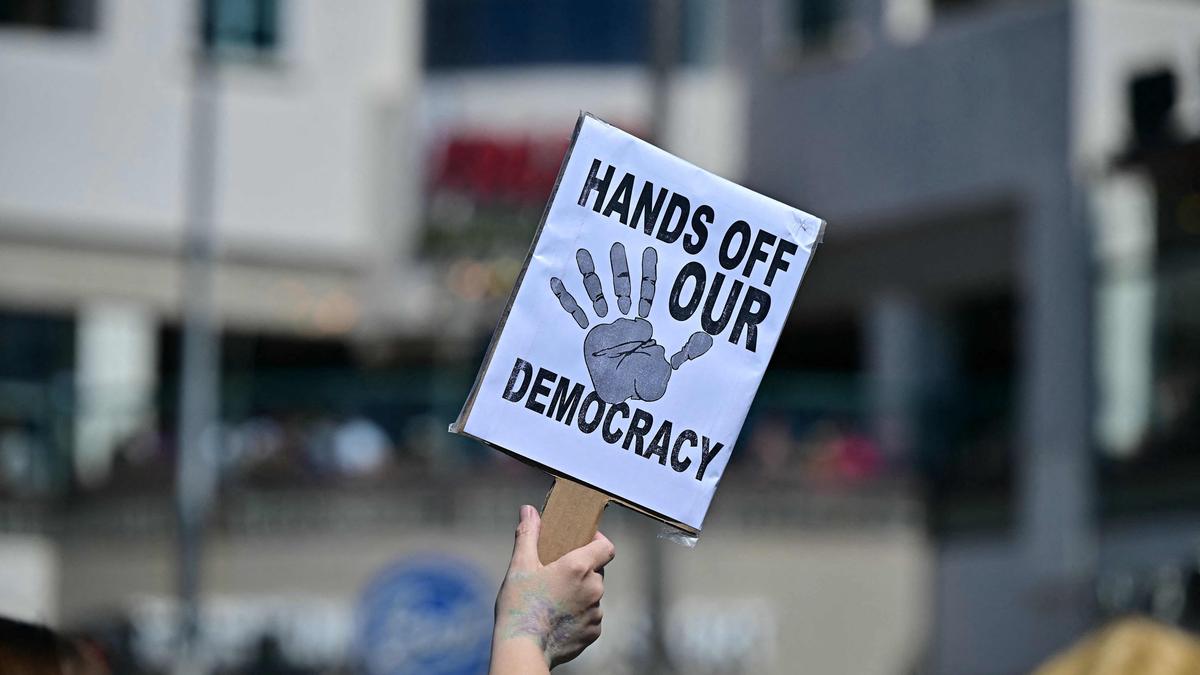
Can the U.S. President serve a third term? | Explained
The Hindu
President Trump explores legal loopholes to serve a third term, despite the 22nd Amendment's clear restrictions.
The story so far: On March 30, the 78-year-old U.S. President Donald Trump said he’s “not joking” about serving a third term in the White House. He further claimed that a legal loophole could make it possible.
Also Read: ‘Hang tough, it won’t be easy’: Trump defiant on tariffs
The 22nd Amendment to the U.S. Constitution, ratified on February 27, 1951, limits U.S. Presidents to two elected terms. It was brought in response to Franklin D. Roosevelt’s unprecedented ‘four-term’ Presidency (1933–1945), which broke the ‘two-term’ unwritten precedent set by the nation’s first President, George Washington, who voluntarily declined a third term in 1796.
The Amendment prohibits anyone from being elected President more than twice, and if someone has served as President for more than two years of another’s term (for example, a Vice President who became President due to the President’s death or resignation), they can only be elected once. Thus, effectively, the maximum U.S. Presidential tenure can be 10 years (two years as a successor plus two full terms). For Mr. Trump, elected in 2016 and 2024, the 22nd Amendment unequivocally bars a third term, due to his two elected tenures (2017–2021 and 2025–2029), regardless of their ‘non-consecutive’ nature.
Despite the 22nd Amendment’s clarity, Mr. Trump has suggested ways to circumvent it. One idea he proposed involves J.D. Vance running for President in 2028 with Mr. Trump as Vice President (VP). If elected, Mr. Vance would resign, allowing Trump to assume the Presidency. However, the 12th Amendment blocks this strategy, stating: “No person constitutionally ineligible to the office of President shall be eligible to that of Vice-President of the United States.” Since the 22nd Amendment bars Mr. Trump from another term, he cannot serve as VP either.
While the VP route is blocked, another theoretical path exists through ‘succession’, as explained by Professor Bruce G. Peabody in his paper. The 22nd Amendment prohibits a person from being “elected” to the Presidency more than twice but does not bar “serving” beyond two terms. In other words, a twice-elected President could ascend to the Oval Office via the line of succession, such as by becoming Speaker of the House, who is elected by members of the House and need not himself be a member of Congress, if the President and VP become unavailable.
A third pathway — repealing the 22nd Amendment — is highly unlikely. Under Article V, this requires either a two-thirds vote in both the House and the Senate or a ‘constitutional convention’— a process never used — called for by two-thirds (34) of State legislatures, followed by ratification by three-fourths (38) of the 50 States. Given the current U.S. political landscape, the likelihood of Mr. Trump securing a constitutional amendment, which has not been done in the past 33 years, is virtually non-existent.

 Run 3 Space | Play Space Running Game
Run 3 Space | Play Space Running Game Traffic Jam 3D | Online Racing Game
Traffic Jam 3D | Online Racing Game Duck Hunt | Play Old Classic Game
Duck Hunt | Play Old Classic Game











